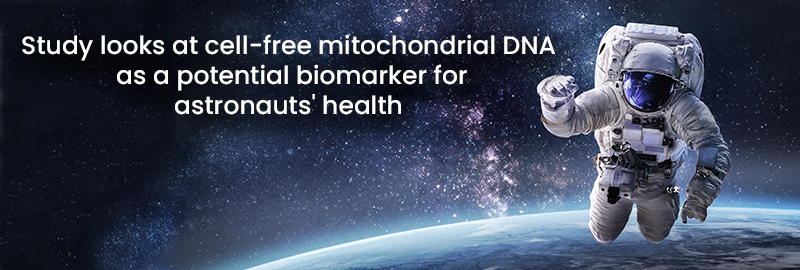Potential Biomarker for Astronauts’ Health?
The physiological stressors of space flight are a significant obstacle to overcome, especially for the 6-month flight to Mars, as well as the decrease in gravity on the surface of the planet. Therefore, the monitoring of serum biomarkers that are selective and sensitive is a vital tool in making sure the men and women of future space explorations remain healthy and as James T. Kirk would say, “To seek out new life and new civilizations. To boldly go where no man has gone before!”
Interstellar travel comes with its own obstacles. Humans did not evolve within a microgravity environment. For the most part, we have been shielded by the sun’s harmful rays and solar radiation. To travel to distant galaxies and planets, we will have to circumnavigate these obstacles and develop new and novel biomarkers to monitor stress and cellular DNA damage. Despite all preventative measures to mitigate adverse health concerns, there is still a need to develop strategies and diagnostic tools to help with the early detection of psychological stress.
The Twin Study was one of the first to report a multi-year, multi-omic approach longitudinally in order to study a human’s response to prolonged spaceflights. Numerous strides have also been made to synthesize technology to monitor an astronaut’s health in real-time during long-duration space missions, such as external and internal advanced biosensors used to monitor inflammation, blood pressure, and cortisol levels. Although these advances in technology will happen in the foreseeable future, the need for more selective, sensitive, and comprehensive biomarkers to monitor cellular stress responses to radiation, microgravity, and isolation is needed now. Researchers at Icahn’s School of Medicine at Mount Sinai chose to measure the levels of circulating cell-free mitochondrial DNA (cf-mtDNA) in the plasma of astronauts. cf-mtDNA release from mitochondria is known to activate numerous cellular pathways associated with DNA damage, oxidative stress, and inflammation. They tested 14 astronauts 10 days before launch, the day of return, and 3 days after return to test their hypothesis. What they found was a vast interastronaut variability of a 2-to-355-fold increase in cf-mtDNA. They show significant increases in the inflammatory cytokines TNF‐α, IL‐1α, IL‐1β at 3 days post-return. Oxidative stress genes SOD1 and GPX1 were significantly upregulated, and APOE was downregulated upon landing and 3 days post-return. HMOX1, SOD2, NOS2, and PRDX3 gene expression were downregulated upon landing. In contrast, gene expression levels of NOX4, SERPINE1, and DUOX1 were significantly elevated only after 3 days post landing. DNA damage genes OGG1 were upregulated upon landing and 3 days post landing, while GDD45a and PARP1 were only upregulated at 3-days post landing.
The researchers also harvested total RNA from peripheral blood mononuclear cells (PBMC) from 6 astronauts to measure the direct expression of genes encoding for DNA damage, oxidative stress, and inflammatory biomarkers. DNA/RNA damage analysis via an ELISA assay was used to determine DNA/RNA oxidative damage. The assay allowed for the differentiation of 8‐hydroxy‐2′‐deoxyguanosine from DNA, 8‐hydroxyguanosine from RNA, and 8‐hydroxyguanine from either DNA or RNA. They found a similar increasing trend of IL‐6, IL‐8, SOD1, SOD2, GPX1, NOX4, GADD45, CAT1, DNA‐PK, and PARP1 in the PBMC’s compared to cf-mtDNA. This research highlights the potential of mitochondrial dysfunction caused by long-duration space flight. Interestingly, mitochondrial dysfunction has been implicated in the onset of cardiomyopathies and heart failure.
Visit us at Axxiem.com
